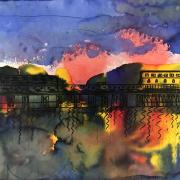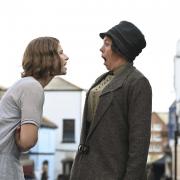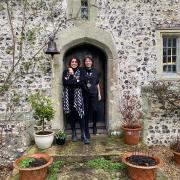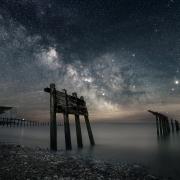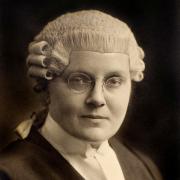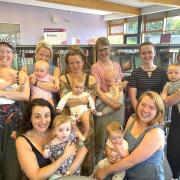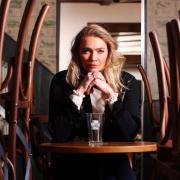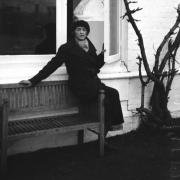Mark Divall came to Charleston in 1985 and was instrumental in the restoration of its gardens. Now, after years spent in France, he is back in the landscape he loves
Since its beginnings as an idyllic rural retreat for Bloomsbury artists Vanessa Bell and Duncan Grant, Charleston has acquired a kind of iconic status. From the First World War on, the 18th century farmhouse became established as a vibrant centre of artistic and intellectual activity, frequented by such illustrious guests as authors Lytton Strachey and E.M. Forster, the critic Roger Fry – and Vanessa Bell’s sister Virginia Woolf, who lived in neighbouring Asham. It was Woolf who, in the winter of 1916, persuaded Bell to rent Charleston, with its enchanting walled garden, tucked away at the end of a long track below Firle Beacon on the South Downs.From the start, the garden has been key to the unique ambience evoked by the house’s early occupants and their coterie. Head gardener Mark Divall works tirelessly all year, striving to meet the constant challenge of maintaining and preserving an internationally famous heritage garden. Mark was involved with the initial restoration project, overseen by the distinguished landscape architect, Sir Peter Shepheard, when The Charleston Trust was formed in the 1980s. His brief was to recreate the garden as authentically as possible, much as it would have appeared during the tenure of Bell and Grant. The late Sir Peter described it as “hauntingly beautiful… a garden filled to overflowing. The plants jostling and blending with one another as in a meadow, not too precise but with a sweet disorder”.Brighton-born Mark, 60, explains what first brought him to Charleston. He had spent several years working in London for Clifton Nurseries, a firm with which Sir Peter Shepheard was closely associated through their work on the garden at Winfield House, the American ambassador’s residence in London. As adviser for the restoration project at Charleston, he suggested that Clifton’s should take on the contract.The garden was in a seriously neglected state, and it was a massive undertaking. As Mark recalls, “I came down in 1985 with another guy and we spent about six weeks digging all the borders by hand, saving all the existing plants that had survived over the years…They insisted we used no weedkillers, so it was all hand digging. We dug it over once, then a second time, and a third time.“It was an extensive project that needed a great deal of sensitive gardening – you couldn’t be gung-ho about it. Everything had to be done properly because there was a historical perspective to it”.To save the long commute from London, he camped a few times in the orchard at Charleston: “So I got to see it when it was very very quiet, and slowly fell in love with the place, the atmosphere…”Sir Peter Shepheard did “an amazing amount of research”, scouring Vanessa Bell’s family photographs, looking at paintings and reading her letters for references to the garden. He sent a blank plan of the garden to people who remembered Charleston during those early years, asking them about their personal memories of the garden: what species were planted, and where. It was, Mark points out, “an incredibly difficult thing to do, as there was such a huge variety of plants”.In June 1986 Charleston reopened to the public. “Sir Peter came that first day and said a marvellous thing to me: ‘Well, it’s your garden now, Mark. Take care of it.’”By this time Mark had been appointed Charleston’s full-time gardener. For two years he lived in a cottage in nearby Firle, then – in 1988 – moved into the house itself after it had been vacated by the (then) curator, Vicky Walton, when she moved to Wales.The following year Mark was introduced to Henrietta Garnett, Duncan Grant’s granddaughter who is Virginia Woolf’s great-niece – and what followed reads like a fairly typical postscript to life among the Bloomsbury set. Mark met Henrietta at Charleston’s AGM at Sussex University and, Mark recalls with a wry smile, “One thing led to another!”In January 1990, “we left for France, destination unknown. The car conked out on the slopes of Mont Ventoux… We set up home together, about 20 km from Hennie’s mother Angelica Garnett.” They remained there for the next 12 years, Henrietta pursuing her writing while Mark kept busy with gardening work for clients including Sir Cameron Mackintosh and Bridget Riley.Sadly, in 2001 they parted company, and after living in Provence for a further five years Mark decided to return to the UK. The timing was fortuitous, as Charleston’s then gardener had resigned and in 2006 Mark was called for interview.Now, nearly seven years on, he is back in his old job, and living upstairs in the house again. In some sense, it feels like he has never been away, although it was a difficult adjustment at first. “I probably didn’t think deeply enough about what it would mean – coming back to a place you’d known… It was so different. Some rooms had disappeared and other places were out of bounds. Several rooms had changed beyond recognition… It was challenging!” With a new romantic partner in his life – Silvia, a sculptor –his enthusiasm for Charleston is as intense as ever. “I just love the garden,” he says, his eyes lighting up. “When I lived in France I was always searching for somewhere with a similar feel to Charleston. I didn’t ever get close. And weirdly enough, if there was a heatwave and it was too hot to sleep, I would picture myself walking around the garden at Charleston! I almost needed to leave it to realise how much I loved it”.It’s wonderful, he reflects, to have his life so “enmeshed” with the work. “It’s seamless, in a way. I can look out, especially from the attic, and see what’s happening out there – in the pond, the herbaceous borders… And to have occasional sightings of a visiting kingfisher or heron, or to hear the hooting of the moorhens on the pond at night – it feels at times as if I’m in the middle of a nature reserve!”But to live in such a magical location, he adds, is not always so heavenly. Not on his days off, with the constant tramp of feet beneath him, from the visiting hordes touring the house: “It’s very hard to clock off”.Is he ever aware of any Bloomsbury ghosts around him?“No, it’s very benign… Even on an August bank holiday, when the place is overrun – after everyone leaves, it’s like having thrown lots of stones in the pond: the ripples calm down… It’s very self-healing”.He enjoys being part of the Charleston team, working within “historical parameters”, but finds his greatest fulfilment in being in charge of such a diverse, colourful garden, a legendary piece of land which has been through so many different phases.The restoration project is ongoing, costing around £25,000 each year for the garden. Mark has periodic help from volunteers, and from gardeners Tom and William who assist one day a week with hedge trimming, digging and th more physically onerous tasks – “as I get more decrepit!”There are, he says, so many sources of interest. “Bell and Grant were prolific painters, especially of the landscape, and of still lives. Above all, they wanted things to paint, and so a lot of the planting was done with that in mind rather than for strictly horticultural reasons.”They were “quite wacky” in the way that they planted things. In 1935 Vanessa Bell wrote to her son Julian Bell, saying: “I think this year we’ll have everything red: antirrhinums, dahlias, zinnias…” Duncan Grant, having been brought up in Burma, had “a great liking for exotics”, and so would often try to introduce exotic species such as red hot pokers and giant prickly rhubarb (Gunnera Manicata) into the garden, but most were too tender to survive. “Grant’s greatest regret was that his dream of having flamingos around the pond was never realised.”For Mark, the garden is “a jewel” whatever the season. His busiest time is between November and March, when Charleston is closed to the public. One of his biggest chores is getting rid of ground elder, a notoriously invasive weed – a long, arduous process which entails digging out tons of soil and bringing in new topsoil. Then there’s a huge amount of pruning to be done, hedges needing cutting, plants to be divided and bulbs to be planted.He sees the garden as “a play with several acts, starting in the spring when bulbs are starting to come through and you can see the outline of beds clearly and geometrically, then it all starts slowly to soften. In early May there’s more of a re-growth; the edges get blurred but you can still see right across the garden, compared with high summer when you can get lost among plants over six feet tall. For each season there will be something to focus on.”Another opening, another richly rewarding and long-running show. And, just as in the theatre, a new audience will turn up to admire Mark Divall’s handiwork. “All the rehearsal work has been done to get to this point, and when we open it’s like the first night of the production!” Charleston, Firle, Lewes, East Sussex BN8 6LL, Tel: 01323 822626, www.charleston.org.uk










